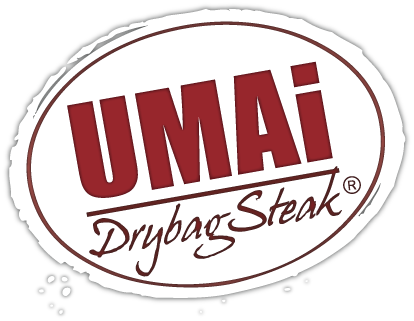Congratulations! Dry aging done! Your ribeye, striploin or sirloin is ready. Now it’s time to trim the “bark” off, cut it into steaks, and get ready to enjoy, share or preserve to savor over time.
Steak lover beware: Dry aged steak cooks faster than “wet-aged” steak. With the lower water content, there is none of the weep and shrivel to indicate doneness. Time has provided tenderness that you don’t want to unintentionally turn to shoe leather.

The ultimate way to cook a steak is sous vide, under vacuum in a controlled temperature water bath. Once the meat has reached the desired temperature of the bath, the meat is cooked perfectly edge to edge. Polish the steak off with a quick sear on a grill or frying pan. This is the secret to a perfect steak.
Freezing dry aged steaks:
Dry aged steaks freeze very well with minimal impact on taste or texture. Because of the reduced moisture content, dry aged steaks are less susceptible than wet aged steaks to freeze damage that is a result of water crystal formation. Simply vacuum seal your dry aged steaks into vacuum/sous vide bags and place them in the freezer. For best results, thaw the steaks very slowly in the refrigerator and bring them to room temperature before grilling or cooking sous vide. You might want “hot tub” the steaks in lukewarm water for an hour or so before cooking so you know they are just right when you toss them on the grill.
Cooking dry aged steaks:
Dry aged steaks tend to cook faster than wet aged steaks because there is just less water in them to “bring to a boil.” The steak will reach doneness in much less time. So, keep an eye on those steaks, use a quick read thermometer, and pull them off before they reach temp to let the carry over do the trick.
Many chefs will quick sear the steak before vacuum packing with a pat of butter and some seasoning. When you sous vide this way, the flavors expand and penetrate the meat delectably. Sous vide cooking is your best guarantee of steak perfection—exact temperature, ideal texture, complete nutritional value and maximum flavor.
One great resource on the web, ChefSteps.com, offers a great visual guide to temperature and doneness. They also offer online video classes on how to cook perfect proteins and more sous vide. Check out their Map of Sous Vide Cooking:

